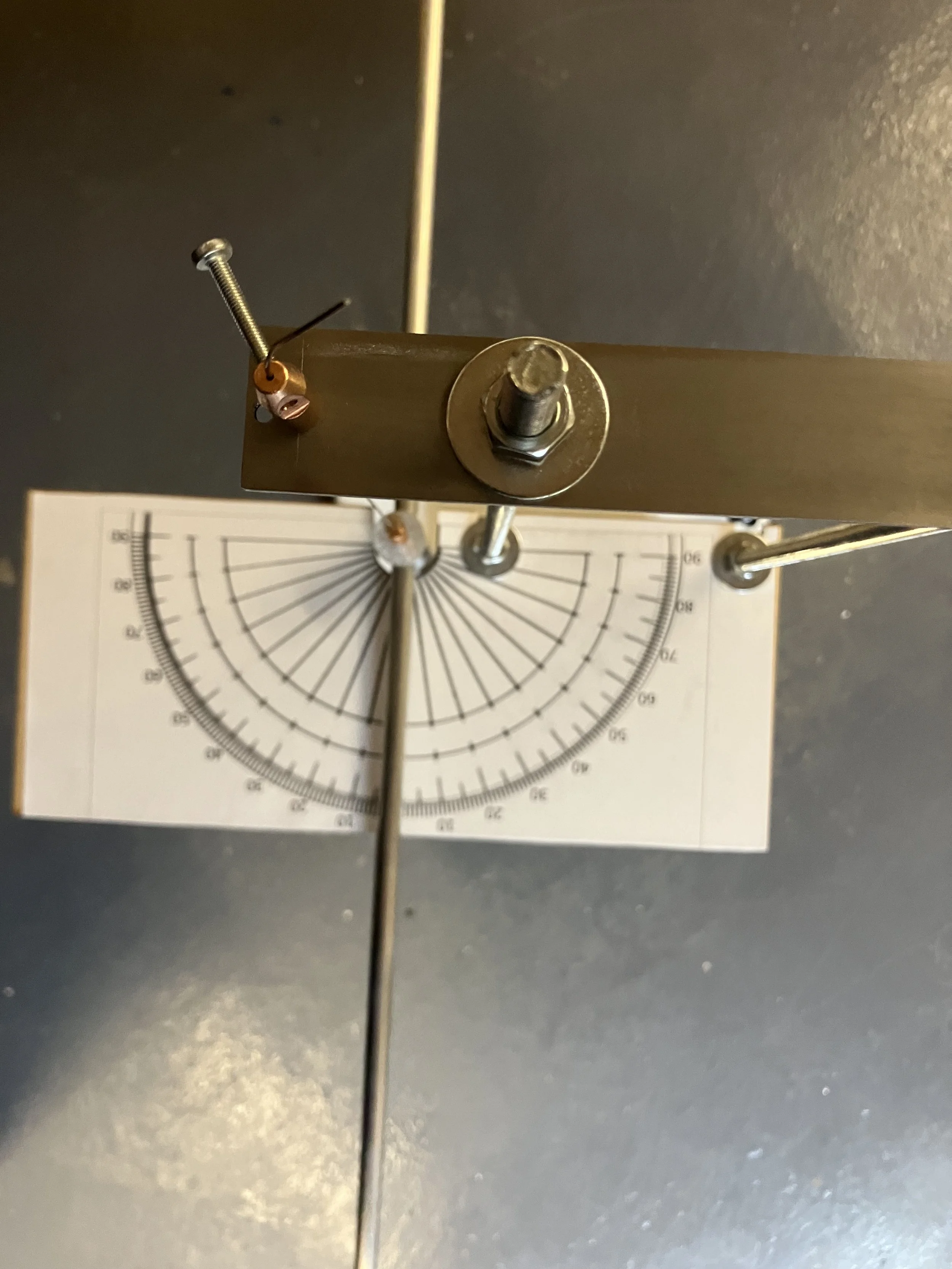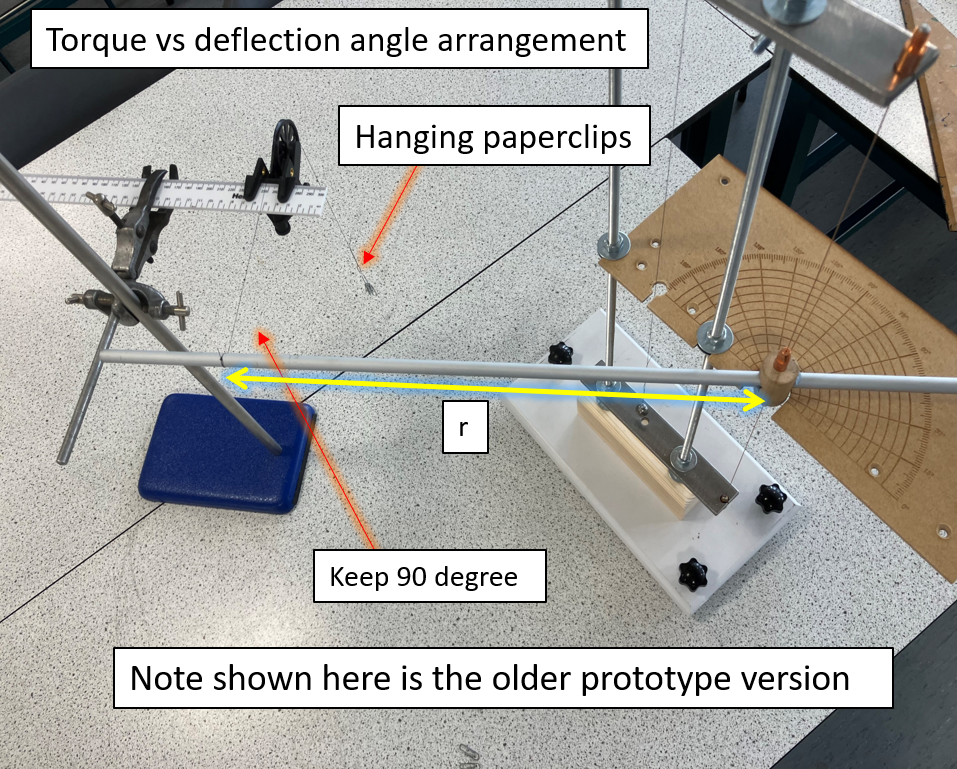 Image 1 of 6
Image 1 of 6

 Image 2 of 6
Image 2 of 6

 Image 3 of 6
Image 3 of 6

 Image 4 of 6
Image 4 of 6

 Image 5 of 6
Image 5 of 6

 Image 6 of 6
Image 6 of 6







Torsion Pendulum - AH Project
This kit is designed primarily as a complete Advanced Higher Investigation Project. There are various options but the recommeneded approach is to complete 3 or 4 experiments to measure the torsion constant of a wire using different methods. Particularly able pupils could also investigate SHM damping using video analysis.
Experiment 1 - Torque vs defletion angle (set radius, varied force)
Experiment 2 - Torque vs defletion angle (set mass, varied radius)
Experiment 3 - Moment of Inertia vs Oscillation Period (vary mass of tube)
Experiment 4 - Moment of Inertia vs Oscillation Period (vary position of point masses)
Experiment 5 - Film system from above then use tracker video anslysis to extract angle vs time data. Fit the data with a since wave to confirm the motion is SHM. Experiments 6-7 require you to make and add cardboard sails to the tube.
Experiment 6 - How does the size of the sail affect the damping decay coefficient
Experiment 7 - How does the position of the sail affect the damping decay coefficient
Experiment 8 - How does the moment of inertia of the system affect the damping decay coefficient for a chosen sail.
.
Features
The base has 3 levelling screws
There is a manual included that discusses the assembly process, the theory, the procedures and the data analysis.
A range of tension levels can be chosen (by feel or string pitch) and then locked in place.
Wires are screwed into place to allow for different lengths, thicknesses or replacement of snapped wires
Built in removable protractor for experiment 1 & 2
Pupils can use this without tools after initial assembly.
Everything can be quickly disassembled for storage, or for weighing of specific parts.
https://www.youtube.com/watch?v=hX7H48acksM
This kit is designed primarily as a complete Advanced Higher Investigation Project. There are various options but the recommeneded approach is to complete 3 or 4 experiments to measure the torsion constant of a wire using different methods. Particularly able pupils could also investigate SHM damping using video analysis.
Experiment 1 - Torque vs defletion angle (set radius, varied force)
Experiment 2 - Torque vs defletion angle (set mass, varied radius)
Experiment 3 - Moment of Inertia vs Oscillation Period (vary mass of tube)
Experiment 4 - Moment of Inertia vs Oscillation Period (vary position of point masses)
Experiment 5 - Film system from above then use tracker video anslysis to extract angle vs time data. Fit the data with a since wave to confirm the motion is SHM. Experiments 6-7 require you to make and add cardboard sails to the tube.
Experiment 6 - How does the size of the sail affect the damping decay coefficient
Experiment 7 - How does the position of the sail affect the damping decay coefficient
Experiment 8 - How does the moment of inertia of the system affect the damping decay coefficient for a chosen sail.
.
Features
The base has 3 levelling screws
There is a manual included that discusses the assembly process, the theory, the procedures and the data analysis.
A range of tension levels can be chosen (by feel or string pitch) and then locked in place.
Wires are screwed into place to allow for different lengths, thicknesses or replacement of snapped wires
Built in removable protractor for experiment 1 & 2
Pupils can use this without tools after initial assembly.
Everything can be quickly disassembled for storage, or for weighing of specific parts.
https://www.youtube.com/watch?v=hX7H48acksM
